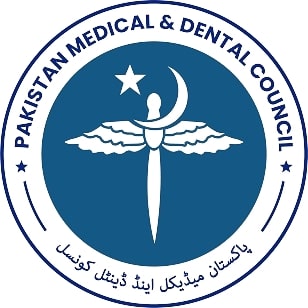A MORPHOMETRIC STUDY ON ANATOMICAL VARIATIONS OF TRANSVERSE FORAMINA IN DRIED TYPICAL CERVICAL VERTEBRAE C3-C6
DOI:
https://doi.org/10.59058/jaimc.v22i1.251Keywords:
cervical vertebrae, foramen tranversarium, vertebral arteryAbstract
Abstract: Foramen Transversarium is a cardinal feature of cervical vertebrae. It transmits vertebral artery along with other contents. Variations in size and shape of foramen transversaria are associated with development or course of vertebral artery. Its compartmentalization can cause compression on the vascular structure causing vertebrobasilar insufficiency. Present study is to observe such variations of size and shape in typical cervical vertebrae to provide data to neurosurgeons and radiologists.
Methods: 170 intact typical cervical vertebrae of unknown sex and age were taken after approval of Ethical Review Board. They were observed for any accessory foramina, shape and size of foramen transversaria bilaterally and transverse and AP diameters of foramen transversarium were taken & recorded with digital vernier caliper. Statistical analysis was applied.
Results: Foramen tranversaria of majority were rounded in shape with 8-10% with incomplete/notched appearance. AP diameters of two sides reported a statistically significant difference. About 10% have accessory foramina and 5 are bilateral.
Conclusion: Vertebral artery injury is uncommon but may be a disastrous complication during cervical spinal surgery. Therefore, proper preoperative investigations and planning is essential for the surgeons.
Downloads
Published
How to Cite
Issue
Section
License
Copyright (c) 2024 Sobia Ibrahim, Aliya Zahid, Tahira Athar

This work is licensed under a Creative Commons Attribution 4.0 International License.
The articles published in this journal come under creative commons licence Attribution 4.0 International (CC BY 4.0) which allows to copy and redistribute the material in any medium or format Adapt — remix, transform, and build upon the material for any purpose, even commercially under following terms.
-
Attribution — You must give appropriate credit, provide a link to the license, and indicate if changes were made. You may do so in any reasonable manner, but not in any way that suggests the licensor endorses you or your use.
- No additional restrictions — You may not apply legal terms or technological measures that legally restrict others from doing anything the license permits.
The editorial board of the Journal strives hard for the authenticity and accuracy of the material published in the Journal. However, findings and statements are views of the authors and do not necessarily represent views of the Editorial Board. Many software like (Google Maps, Google Earth, Biorender (free version)) restricts the free distribution of materials prepared using these softwares. Therefore, authors are strongly advised to check the license/copyright information of the software used to prepare maps/images. In case of publication of copyright material, the correction will be published in one of the subsequent issues of the Journal, and the authors will bear the printing cost.










